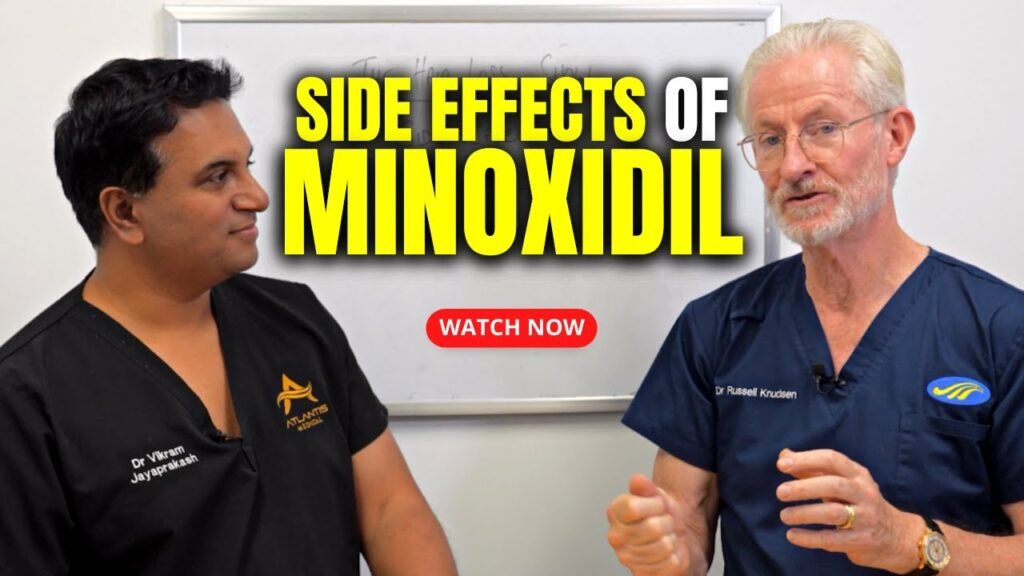Understanding Minoxidil and Its Uses
Minoxidil is a well-known medication primarily used for treating hair loss, particularly in conditions like androgenetic alopecia. Originally developed as an oral medication for high blood pressure, its ability to stimulate hair growth was discovered as a side effect. Today, it is widely available as a topical solution or foam, making it convenient for users to apply directly to the scalp. Understanding how minoxidil works is essential for those considering it as a treatment option. The medication works by enlarging hair follicles and prolonging the growth phase of hair, which can result in thicker and more voluminous hair over time.
Common Uses of Minoxidil
Minoxidil is most commonly used to combat male and female pattern baldness, which is characterized by gradual hair thinning and loss. For men, it is often applied to the crown of the scalp, while women typically use it to address diffuse thinning across the scalp. Beyond its primary use, some individuals have explored minoxidil for off-label uses, such as treating other types of alopecia or encouraging facial hair growth. However, its effectiveness can vary, and its essential to consult a healthcare professional before using minoxidil for these purposes.
Application and Considerations
When using minoxidil, proper application is crucial for achieving desired results. Users should apply the product to a clean, dry scalp, usually twice daily, unless directed otherwise by a healthcare provider. Consistency is key, as it may take several months to notice significant improvements. Its also important to be aware of potential side effects, such as scalp irritation or unwanted hair growth in adjacent areas. Understanding these factors can help individuals make informed decisions about incorporating minoxidil into their hair care regimen.
Common Symptoms of a Minoxidil Allergic Reaction
When using minoxidil, an over-the-counter medication commonly used for hair regrowth, it is essential to be aware of potential allergic reactions. An allergic reaction to minoxidil can manifest in various ways, and recognizing these symptoms early is crucial for your health and safety. One of the most common symptoms is skin irritation, which may include redness, itchiness, and rash on the area where minoxidil is applied. This localized reaction is often the first sign that your skin might be sensitive to the product.
In some cases, users may experience more severe symptoms such as swelling of the face, lips, or throat. This type of reaction is more serious and can indicate anaphylaxis, a potentially life-threatening condition that requires immediate medical attention. If you notice any unusual swelling after using minoxidil, it is important to discontinue use and consult a healthcare professional as soon as possible.
Another symptom to be vigilant about is respiratory issues. Some individuals may experience difficulty breathing, tightness in the chest, or wheezing after applying minoxidil. These symptoms can occur due to the bodys adverse reaction to the medication and should not be ignored. It is advisable to seek emergency medical care if you encounter any breathing difficulties after using minoxidil to ensure your safety and well-being.
How to Diagnose a Minoxidil Allergy
Diagnosing a minoxidil allergy involves understanding the symptoms and conducting specific tests to confirm the presence of an allergic reaction. Common symptoms of a minoxidil allergy include itching, redness, or a rash at the application site. More severe reactions might manifest as swelling of the face or extremities, difficulty breathing, or dizziness, indicating a need for immediate medical attention. Recognizing these symptoms early is crucial for preventing further complications.
Consulting a Healthcare Professional
To accurately diagnose a minoxidil allergy, it is essential to consult a healthcare professional. A dermatologist or allergist can provide expert evaluation and may recommend a patch test. During this test, a small amount of minoxidil is applied to a patch of skin to observe any allergic reaction over 48 to 72 hours. This controlled method helps in identifying a minoxidil allergy with precision and ensures that other potential irritants are not mistaken for the cause.
Documenting Symptoms and Medical History
Keeping a detailed record of symptoms and any previous allergic reactions is beneficial when diagnosing a minoxidil allergy. Note the onset and duration of symptoms, as well as any other products used concurrently with minoxidil. Providing your healthcare provider with a comprehensive medical history, including any known allergies, can assist in ruling out other causes and confirming a diagnosis of minoxidil allergy. This documentation plays a critical role in developing an effective management plan and ensuring a safe approach to hair loss treatment.
Steps to Take if You Experience an Allergic Reaction to Minoxidil
If you suspect an allergic reaction to Minoxidil, its crucial to act promptly to minimize any adverse effects. The first step is to immediately discontinue use of the product. Continuing to apply Minoxidil could exacerbate the reaction, leading to more severe symptoms. Gently wash the affected area with mild soap and lukewarm water to remove any residue from the skin. Avoid scrubbing, as this could irritate the skin further.
Seek Medical Advice
Contact a healthcare professional as soon as possible. Its essential to describe your symptoms in detail, including when they started and any changes you have noticed. Common signs of an allergic reaction can include redness, itching, swelling, or even difficulty breathing. Your doctor may recommend an over-the-counter antihistamine to help manage mild symptoms or prescribe a more potent medication if necessary. Always follow the guidance of a healthcare provider for safe and effective treatment.
Monitor Your Symptoms
Keep a close eye on your symptoms, noting any changes or improvements. If your symptoms worsen or new symptoms appear, seek immediate medical attention. In rare cases, allergic reactions can escalate into anaphylaxis, a severe and potentially life-threatening condition that requires emergency care. Its also helpful to document your experience, as this information can assist healthcare professionals in determining the best course of action for future treatment and help you avoid similar reactions with other products.
Preventing Minoxidil Allergic Reactions: Tips and Advice
When considering the use of minoxidil for hair regrowth, it’s essential to be proactive in preventing potential allergic reactions. Allergic responses to minoxidil can range from mild irritation to more severe symptoms, so understanding how to minimize risks is crucial. One of the first steps is to perform a patch test before applying the product extensively. This involves applying a small amount of minoxidil to a discreet area of the skin and observing for any adverse reactions over 24 to 48 hours. This simple precaution can help identify sensitivities early and prevent widespread skin issues.
Consulting with a healthcare professional before beginning minoxidil treatment can also provide personalized guidance tailored to your specific health needs. A doctor or dermatologist can assess your medical history and any existing allergies, offering recommendations on the best formulation of minoxidil to use, such as foam or liquid, which may be less irritating for some users. Additionally, they can advise on the appropriate concentration, as higher strengths may increase the likelihood of an allergic reaction.
Maintaining a consistent and proper application routine is another effective strategy to prevent allergic reactions. Always follow the manufacturers instructions regarding dosage and frequency. Avoid overuse, as this can exacerbate skin sensitivity and lead to irritation. Moreover, keeping the scalp clean and dry before application can enhance absorption and reduce the chance of irritation. Consider using a gentle, hypoallergenic shampoo to maintain scalp health, which can further reduce the risk of adverse reactions. By taking these preventive measures, users can significantly lower the likelihood of experiencing allergic reactions while benefiting from minoxidil’s hair regrowth properties.


